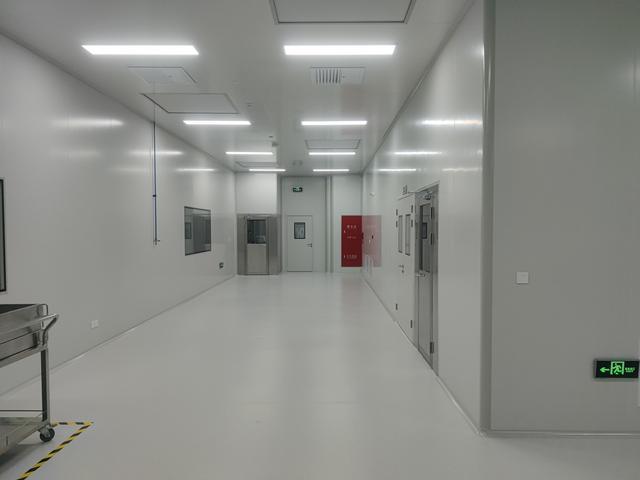 摘要:
**Title:GuidetoShanghaiCleanroomConstruction****IntroductiontoCleanroomConstructioninShang...
摘要:
**Title:GuidetoShanghaiCleanroomConstruction****IntroductiontoCleanroomConstructioninShang... Title: Guide to Shanghai Cleanroom Construction
Introduction to Cleanroom Construction in Shanghai
Cleanroom construction in Shanghai involves meticulous planning, precise execution, and adherence to stringent standards to create controlled environments essential for industries like pharmaceuticals, electronics, biotechnology, and semiconductor manufacturing. As Shanghai emerges as a hub for technological innovation and industrial development, the demand for cleanroom facilities continues to rise. Whether it's for research, production, or testing purposes, constructing a cleanroom requires specialized knowledge and expertise to meet regulatory requirements and industry standards.
Factors to Consider Before Cleanroom Construction
1.
Regulatory Compliance
: Understand and comply with relevant regulations and standards such as ISO 14644 for air cleanliness, Good Manufacturing Practice (GMP), and other industryspecific guidelines.2.
Cleanroom Classification
: Determine the required cleanliness level (ISO Class) based on the activities conducted within the cleanroom and the industry standards applicable to your operation.3.
Location Selection
: Choose a suitable location considering factors like proximity to suppliers, transportation facilities, availability of utilities, and regulatory zoning requirements.4.
Design and Layout
: Work with experienced cleanroom designers to develop a layout that optimizes workflow, minimizes contamination risks, and integrates essential features like air handling systems, gowning rooms, and equipment access points.5.
Construction Materials
: Select construction materials that are compatible with cleanroom requirements, such as nonporous surfaces, seamless flooring, and chemicalresistant finishes.
6.
HVAC System Design
: Design a robust Heating, Ventilation, and Air Conditioning (HVAC) system capable of providing precise temperature, humidity, and filtration control to maintain the required cleanliness levels.7.
Utility Requirements
: Plan for adequate utilities including power supply, water, compressed air, and waste disposal systems to support cleanroom operations.Steps in Cleanroom Construction Process
1.
Project Planning and Feasibility Study
: Conduct a comprehensive feasibility study considering project scope, budget, timeline, and regulatory requirements. Define project goals and establish a clear roadmap for execution.2.
Design Phase
: Collaborate with architects, engineers, and cleanroom specialists to develop detailed architectural and engineering drawings, including floor plans, elevations, and mechanical schematics.3.
Material Procurement and Construction Preparation
: Source cleanroomgrade materials, equipment, and components required for construction. Prepare the construction site by clearing the area, installing temporary facilities, and ensuring safety compliance.4.
Construction Execution
: Commence construction following approved designs and construction documents. Monitor progress closely to ensure quality, safety, and adherence to project specifications.5.
Installation of Cleanroom Systems
: Install HVAC systems, filtration units, lighting fixtures, flooring, wall panels, ceiling grids, and other essential cleanroom components according to design specifications.6.
Testing and Commissioning
: Conduct rigorous testing and validation procedures to verify cleanroom performance and compliance with regulatory standards. This may include air particle count testing, airflow visualization, leak testing, and HVAC system validation.7.
Certification and Handover
: Obtain necessary certifications from regulatory authorities and independent testing agencies to demonstrate compliance with cleanliness standards. Provide comprehensive training to staff on cleanroom protocols, maintenance procedures, and safety practices before handing over the facility for operational use.Challenges and Best Practices
Budget Management
: Cleanroom construction projects often involve significant upfront costs. Implement effective budget management strategies to control expenses without compromising quality or regulatory compliance.
Risk Mitigation
: Identify potential risks such as delays in material procurement, design changes, or regulatory hurdles, and develop proactive mitigation plans to minimize their impact on project timelines and budgets.
Communication and Collaboration
: Foster open communication and collaboration among project stakeholders including architects, engineers, contractors, and regulatory authorities to ensure alignment of goals and expectations throughout the construction process.
Flexibility and Adaptability
: Remain flexible and adaptable to changing project requirements or unforeseen challenges. Anticipate potential issues and have contingency plans in place to address them promptly.
Continuous Improvement
: Embrace a culture of continuous improvement by soliciting feedback from project team members and incorporating lessons learned into future cleanroom construction projects to enhance efficiency and effectiveness.Conclusion
Cleanroom construction in Shanghai requires a multidisciplinary approach encompassing regulatory compliance, meticulous planning, precise execution, and collaboration among various stakeholders. By following best practices and leveraging experienced professionals, organizations can successfully construct cleanroom facilities that meet stringent cleanliness standards, support operational requirements, and facilitate technological innovation across diverse industries.








